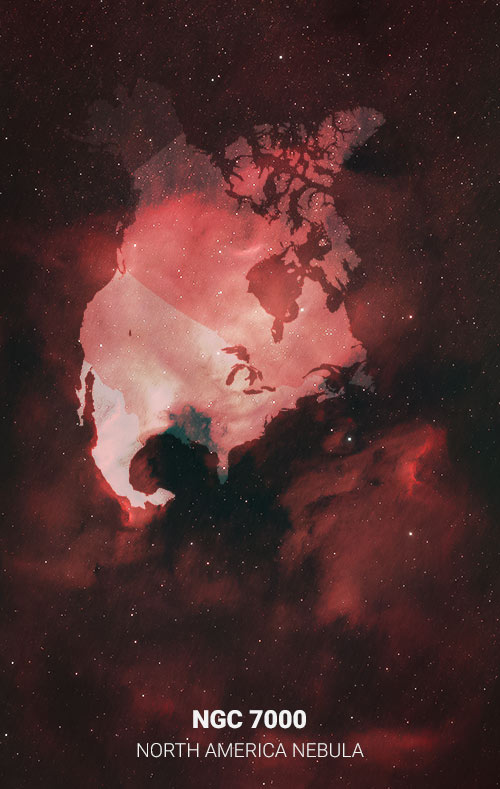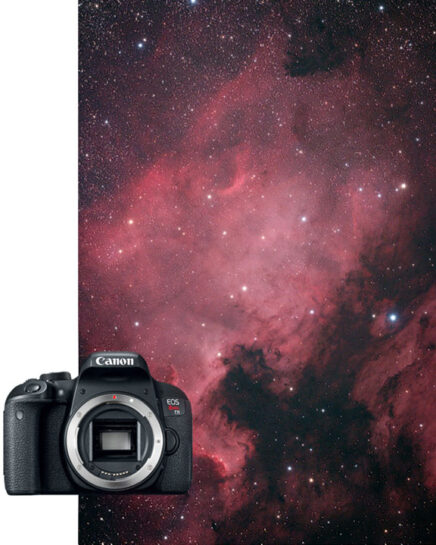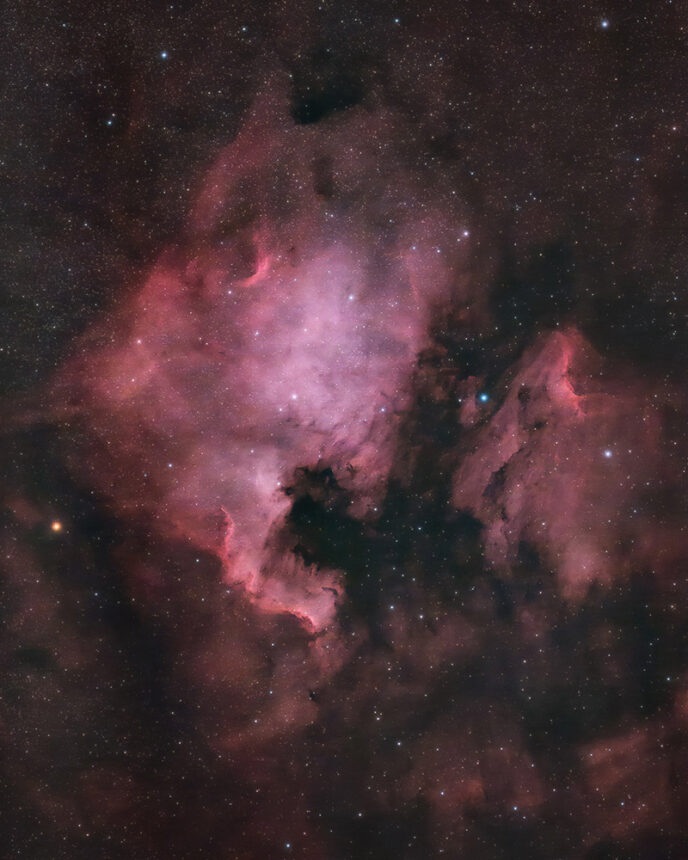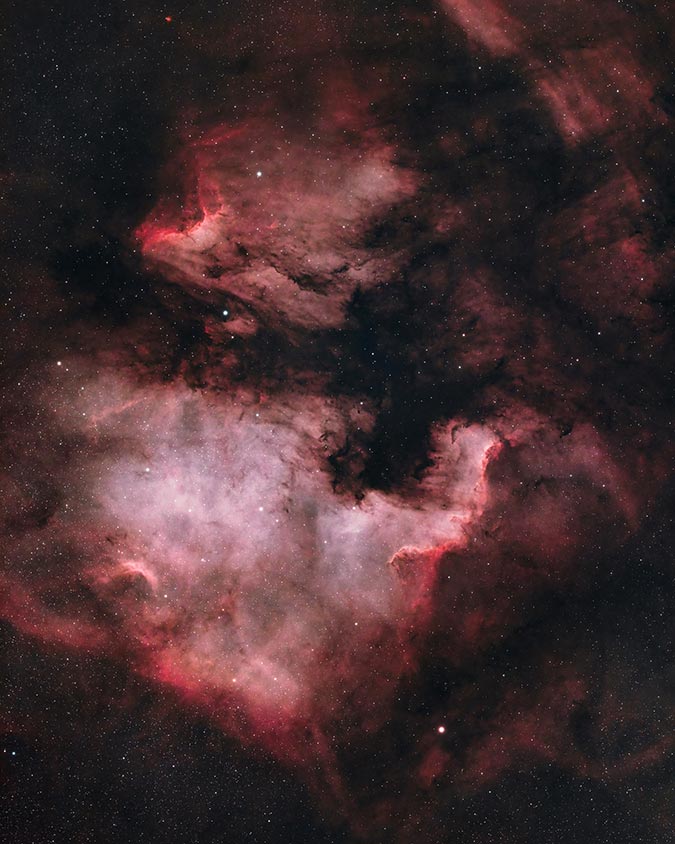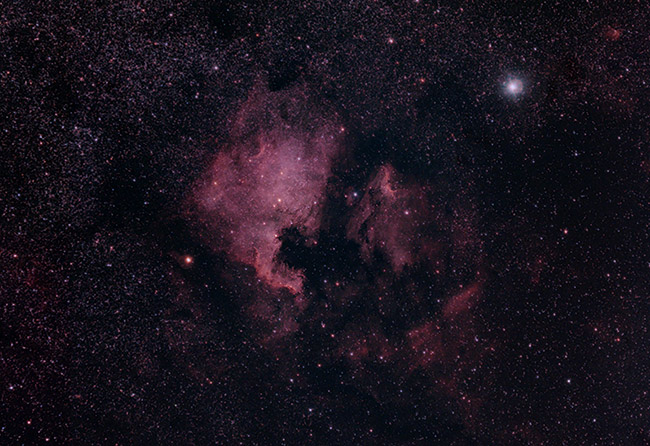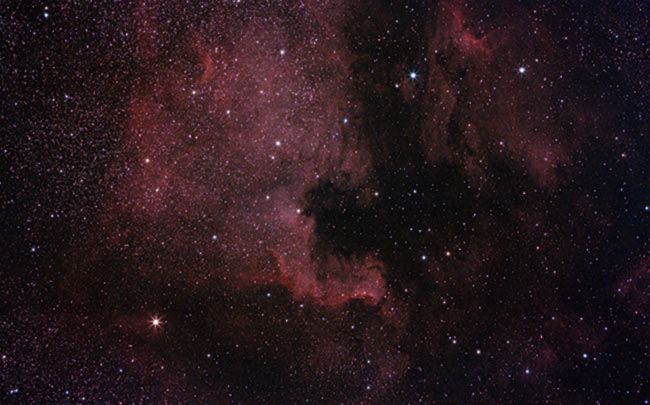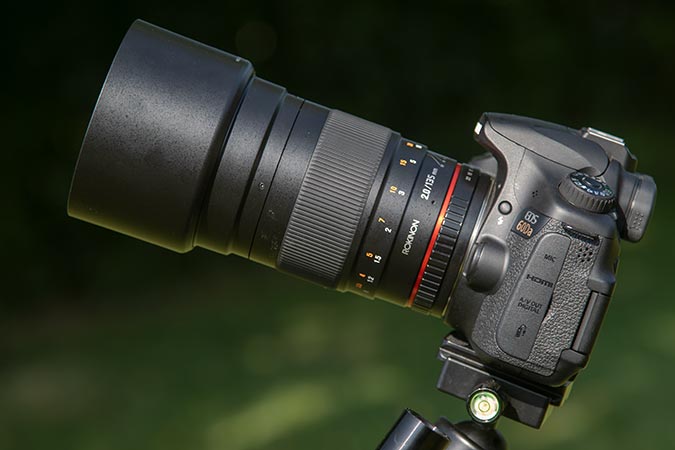Photograph the North America Nebula
The North America Nebula (Cataloged as NGC 7000 or Caldwell 20) is a large emission nebula in the constellation Cygnus. The shape of this nebula looks a lot like the continent it was named after and covers an area more than four times the size of the full moon.
From the northern regions of Canada to the Gulf of Mexico, this nebula’s name becomes obvious right away. I have overlayed the shape of the continent over the image to showcase how similar the shape of the North American nebula is.
Where is the North America Nebula?
As far as nebulae go, this one is extremely easy to locate in the night sky. It is one of the brightest nebulae in the night sky.
The North America Nebula is observable to those living in the northern hemisphere, in the constellation Cygnus the Swan.
Visual astronomers may have a difficult time detecting this diffuse nebula through the eyepiece, but a short 30-second exposure with a DSLR camera will reveal its familiar shape. (A camera that has been modified for astrophotography will help.)
The star map below indicates where you’ll find the North America Nebula in Cygnus. I’ve placed labels of the brightest stars and notable deep sky objects over a wide-field image of the “Northern Cross” region of the Milky Way.
The North America Nebula (sometimes incorrectly referred to as the “North American Nebula“) is rather easy to find thanks to its close proximity to the bright star, Deneb.
Deneb is one of the brightest stars in the night sky and is one of three stars in the “Summer Triangle” (the other two are Altair and Vega). In terms of backyard astrophotography, NGC 7000 is a massive target with apparent dimensions of 120 x 100 arcmins.
The constellation Cygnus includes plenty of hydrogen gas, and several popular emission nebula deep sky objects. The Pelican Nebula sits right next to the North America Nebula and is often photographed in the same frame. For a photo like this, a focal length of approximately 300mm or less is required.
North America Nebula Details
- Constellation: Cygnus
- Designations: NGC 7000, Caldwell 20, Sharpless 117
- Object Type: Emission Nebula
- Apparent Magnitude: 4
- Size: 120 x 100 arcmins, 6 degrees
- Distance: 1,500 lights years from Earth
From the northern hemisphere, the best time to observe and photograph the North America Nebula is from June – September. During the summer months, the constellation Cygnus reaches high overhead throughout the night. This is an opportune time to capture NGC 7000 as is the least affected by poor transparency and turbulence in the air.
It is said that it is possible to observe this emission nebula with the unaided eye but requires extremely dark skies and excellent seeing. Binoculars and small telescopes will show this nebula as a faint, foggy patch of light. Only through astrophotography, are we able to reveal the intense red color of the hydrogen alpha emission line.
Observing the North America Nebula
This nebula is bright enough to observe through the eyepiece of an astronomical telescope. The brightest area is the Cygnus Wall, which is visible through telescopes with at least 8 inches of aperture under a moonless sky.
To help you find this object, you can use a stargazing app on your mobile phone to guide you in the right direction. Unlike some of the smaller, dimmer nebulae in the night sky, this object is relatively easy to find.
A Dobsonian telescope is one of the best ways to view this deep-sky object, particularly one with a large aperture and wide aperture. The Celestron StarSense Explorer Dob is an excellent choice (shown below).
Using a Dobsonian Telescope to observe the North America Nebula.
A visual observation of the nebula will not look the way it does in pictures. You will not see colors, only a dim patch of nebulosity in the Cygnus Wall region.
Astrophotography
NGC 7000 is a well-photographed astrophotography target, using a wide-field telescope, or a camera lens attached to a DSLR. The glowing hydrogen gas emitted from the North America Nebula, particularly around the Cygnus wall makes it a sought-after image for backyard astrophotographers.
Over the years, I have photographed this region of the sky countless times using a camera and telescope (and sometimes, a camera lens). A wide-field refractor telescope with a short focal length is recommended for such a large astrophotography target.
The following image was captured using a Canon EOS Rebel Xsi DSLR camera (The Canon EOS T7i is the updated model) and an Explore Scientific ED80 apochromatic refractor telescope.
The North America Nebula captured using a DSLR camera and telescope.
A DSLR or mirrorless camera (even if has not been modified for astrophotography) is more than capable of capturing breathtaking images of the North America Nebula.
For wide-field targets like the North America Nebula, a DSLR or mirrorless camera has an advantage over many of the dedicated astronomy cameras available. The sensor size of a crop sensor (and especially a full-frame) is larger than the ones you’ll find in most one-shot-color astronomy cameras.
This means you’ll be able to record a much larger field of view. Cameras with a full-frame sensor use the native focal length of your telescope without cropping the image.
Another benefit to wide-field nebulae like this is that a lightweight, compact telescope is well-suited to photograph it (see the astrophotography telescopes I recommend).
Of course, the image acquisition stages outside are only one-half of the process. To complete your image, you must carefully process the data to bring out the signal.
The photo was created by taking 35 x 5-minute exposures @ ISO 1600 under moderately dark skies. The images were calibrated and stacked using an image stacking software (DeepSkyStacker) to improve the signal-to-noise ratio before the final processing was done in Adobe Photoshop CC.
To see the way I process my astrophotography images in Adobe Photoshop, please see my premium image processing guide.
Photography Tips
To capture the intense hydrogen gas of this interstellar cloud, long exposure images must be captured on a tracking equatorial mount. A light pollution filter, especially one with a narrow band pass that isolates hydrogen-alpha (h-alpha) light is best.
The standard best practices apply when photographing this target, such as a precise polar alignment, and a concentrated effort to focus the stars. Framing up the target in the orientation you desire will likely eat up the majority of your setup time.
The framing you choose may vary widely from the ones shown on this page, depending on the magnification of the optical instrument used.
The following image was captured using a DSLR camera (Canon EOS 60Da) and a William Optics RedCat 51 refractor telescope. To find out what the field of view will be for your camera sensor and telescope, I recommend visiting the resources page for some helpful tools.
The North America Nebula (DSLR camera and telescope)
Image Details:
The image above was captured from my light-polluted backyard in the city (Bortle Scale Class 7). I used an Optolong L-eNhance filter to help isolate the regions of hydrogen gas from a washed-out city sky.
- Total Exposure: 3 Hours, 32 Minutes
- Integration: 53 x 4-minutes @ ISO 1600
- Processing: DeepSkyStacker, Adobe Photoshop
- Camera: Canon EOS 60Da
- Telescope: William Optics RedCat 51
- Filter: Optolong L-eNhance
- Mount: iOptron SkyGuider Pro
As far as deep-sky objects go, NGC 7000 is absolutely massive (120 × 100 arcmins). I recommend shooting the North America Nebula with a telescope or lens that is between 100-400mm for the best results.
A telescope with a shorter focal length will reveal an equally impressive nebula close by, IC 5070.
Owners of high-magnification, long focal length telescopes (1000mm+) tend to focus their attention on a specific area of the nebula. There are a few stand-out sections of the North America Nebula, none of which are quite as impressive as the Cygnus Wall.
The Cygnus Wall
The “Cygnus Wall” refers to the area of the nebula that resembles Mexico and Central America. This region of the nebula exhibits the most concentrated star formation, where new stars are being born from dense clouds of gas.
The photo below highlights just how intense the glowing light emitted from hydrogen gas is in the Cygnus Wall. This photo was captured using a dual-bandpass filter (Ha + OIII) and a one-shot-color dedicated astronomy camera.
The Cygnus Wall. Sky-Watcher Esprit 100 APO and ZWO ASI294MC Pro.
In the image above, the 550mm focal length of the telescope used (in combination with the image scale of the camera) was a little too “deep” to capture the entire nebula. This should give you a good idea of how large this object is in terms of astrophotography.
For comparison, have a look at the field of view using a crop-sensor dedicated astronomy camera (ZWO ASI2600MC Air), and an Askar SQA55 refractor telescope at 264mm shown below.
A wide-field look at NGC 7000 and the nearby Pelican Nebula. (ASI2600MC Pro + Askar SQA55 Quintuplet Astrograph).
I believe the image is useful to those looking to frame up this target using a telephoto camera lens or a wide-field telescope. The “near-starless” appearance of this image is due to the narrowband filter used (Triad Ultra Filter), and the star minimizing techniques applied in post-processing.
I also combined narrowband h-alpha data collected using a Rokinon 135mm F/2 lens (at F/3.2) and my Canon EOS T3i DSLR. I blended this dynamic greyscale data into the red channel of the color image, as well as a luminance layer.
Astrophotography with a Camera Lens
The image below was captured using a Canon EOS Rebel DSLR (full-spectrum modified) and a Canon EF 24-105mm F/4L Lens. The lens was set to its maximum focal length of 105mm to produce the scale of this target shown below.
At this focal length, the Pelican Nebula is also in the frame, along with nearby Deneb to the upper right.
This image was captured from a Bortle Scale Class 8 backyard (where I lived in 2017), on a small camera tracker called the iOptron SkyGuider Pro. A mid-range zoom lens like the 24-105mm can be tricky to focus and balance but offers an incredible opportunity to photograph objects in space from a new perspective.
The North America Nebula and Pelican Nebula at 105mm.
Several 2-minute exposures (at ISO 800) were stacked together using DeepSkyStacker, followed by further image processing in Adobe Photoshop. A Skytech CLS-CCD filter was used to help reduce the city glow and capture more contrast in the nebula. I have found this light pollution filter to be effective when shooting emission nebulae with a modified DSLR.
The image above was cropped after processing in Photoshop to remove unwanted stacking artifacts near the edges. Compare the magnification of this nebula at 105mm to one taken at 300mm. This time, I used a Canon EF 300mm F/4L lens to capture the action. As the focal length of the telescope or camera lens increases, so do the intricate details of Caldwell 20.
The North America Nebula and Pelican Nebula at 300mm.
North America Nebula using a 135mm Lens
The North America Nebula is the perfect target for a 135mm lens. The Rokinon 135mm F/2 ED UMC lens frames up this 120 x 100 arc-minute-wide nebula, the Pelican Nebula, with room to spare.
If you are using a crop sensor DSLR camera such as a Canon 60Da, or Rebel series body (1.6X crop), a 135mm prime lens is probably your best option.
The Rokinon 135mm F/2 ED UMC lens.
The following photo was captured from my backyard during a nearly full moon (85% illumination) using an Astro-modified Canon EOS Rebel T3i and a Rokinon 135mm (Samyang) lens. An Astronomik 12nm Ha clip-in filter was used to isolate the intense regions of hydrogen gas in my photo.
The North America Nebula using a 135mm Camera Lens (Ha Filter).
Final Thoughts
Sharpless 117 is probably one of the most photographed deep-sky objects in the night sky. It’s right up there with the Orion Nebula and the Andromeda Galaxy. This glowing nebula is so large and well-defined, it’s no wonder amateur astrophotographers like me return to Cygnus year after year.
I have now photographed this object at least a dozen times, and my astrophotography skills have improved year over year. It’s interesting (and perhaps inspiring) to witness the progress made on a specific target over time. The timeline below shows my progress on NGC 7000 over the years.
The best thing about the North America Nebula in terms of astrophotography is that you can capture it using almost any camera. It’s bright enough to capture without an astro-modified camera (sensitive to IR light), and large enough to capture using a small telescope or camera lens.
I highly suggest you take a shot at this incredible deep-sky object with your camera. Capturing a photograph of this nebula for yourself may just inspire you to develop your passion for astronomy for the rest of your life.
